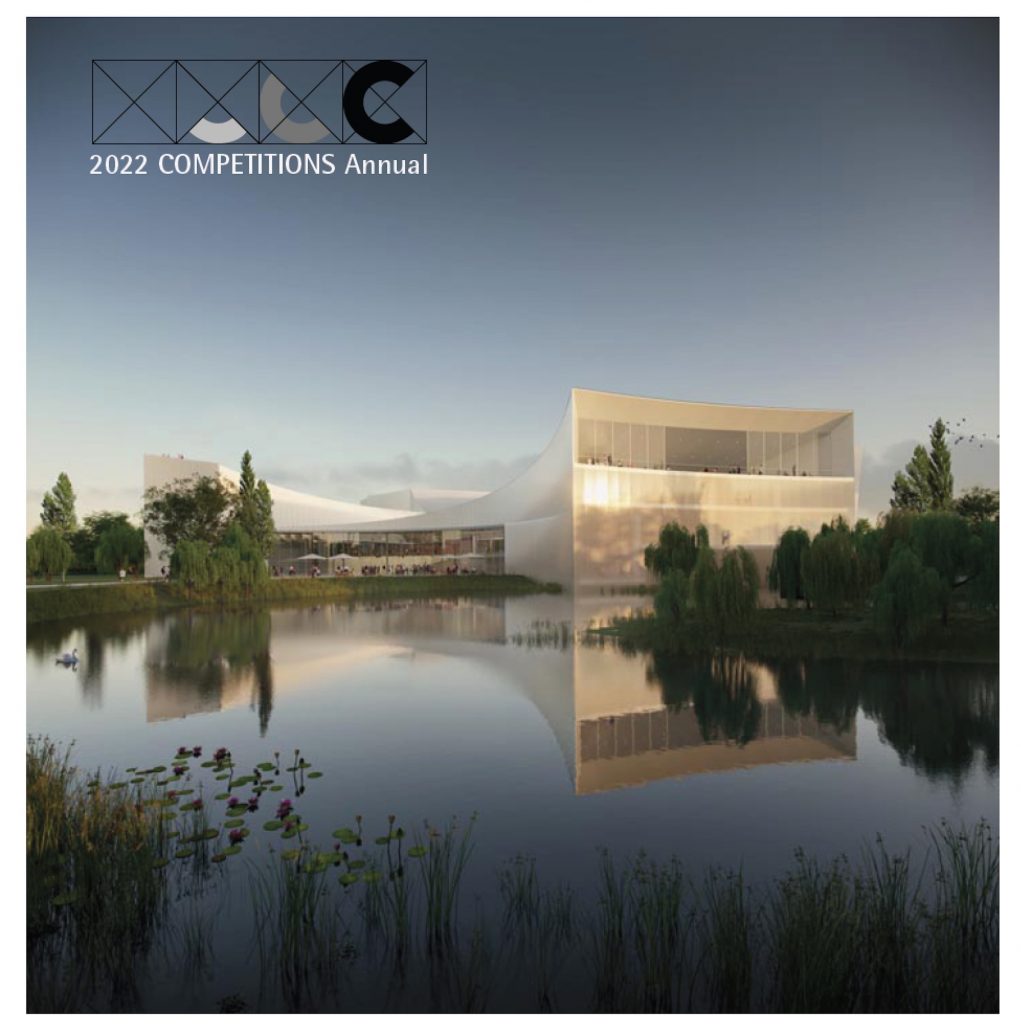re:CONNECT – An Open Ideas CompetitionSponsor: The City of Vancouver Type of competition: Open, international, ideas
Language: English Location: Vancouver, BC Eligibility: Urbanists of all professions and backgrounds, architects, intern architects, designers, students and creative thinkers among the general public are invited to submit proposals. Entrants will be able to participate individually or in groups. There is no limit on the number of participants in a group entry. Interdisciplinary teams are encouraged. Registration Fee: Two options offered: “Free” – No entry fee. Jury selected winners, but no cash prizes “Fee” – $65 entry fee. Jury selected winners, with cash prizes for top idea in each category totaling $10,000
Timeline: 22 September 2011 – Competition launched 13 October 2011 – Questions deadline 20 October 2011 – Answers to questions posted on website 2 November 2011 – Registration deadline 4 November 2011 – Submission deadline 9 November 2011 – Jury deliberation 21-25 November 2011 – Online voting for People’s Choice Award
1 December 2011 – Celebration event with guest speakers and presentation of winning entries Jury: Allan Jacobs – Author, Urban Design and Planning Consultant Patricia Patkau, MAIBC – Architect and Founding Partner, Patkau Architects Joe Hruda, MAIBC – Architect and Founding Partner, CIVITAS Tom Hutton – Professor, Centre for Human Settlements & School of Community and Regional Planning, UBC Rob Bennett – Executive Director, Portland Sustainability Initiative Awards: One winner for each of three categories:
“Connecting the Core” – $5,000 “Visualizing the Viaducts” – $3,500 “The Wildcard” – $1,500 Design challenge: re:CONNECT challenges the public and design community to generate ideas about the land lying to the east of Vancouver’s downtown core, and the two viaducts that connect the downtown to this area. The three categories will look for solutions on a large scale (False Creek Flats), small scale (Viaducts), and a wildcard category where anything goes. Prize money is $5000, $3500, and $1500 for the three categories. Submission requirements: - Submissions must be received digitally, as either a PDF or JPEG
- Submissions must contain two (2) A1 sized panels (594mm x 841mm)
- Content on panels must be oriented in portrait-style
- For both streams, submission panels must integrate text that identifies the goals pursued and the challenges addressed:
-
- The ‘fee stream’ may contain up to three paragraphs, each no more than 100 words
- The ‘free stream’ may integrate up to 600 words maximum into their panels.
- Clear visual communication of the idea is required in both streams
- Applicants must include as part of their submission, a small square JPEG (approximately 1024 x 1024 pixels) to act as a thumbnail reference for the online public voting gallery
- In addition, a written summary of up to 70 words must be submitted as a reference for the voting gallery
- Participants are permitted to upload revised material but the previous submission will be overwritten
- All panels must be submitted entirely anonymously and be void of any identifying text, logos, or other graphics. (see more detail below)
- Each submission must be clearly directed to a single award category. A single submission cannot be entered in multiple categories; however an applicant may enter unique submissions in each category. In the ‘fee stream’ an applicant is required to pay the fee only once to enter one submission in each category
E-mail: reconnect@vancouver.ca |
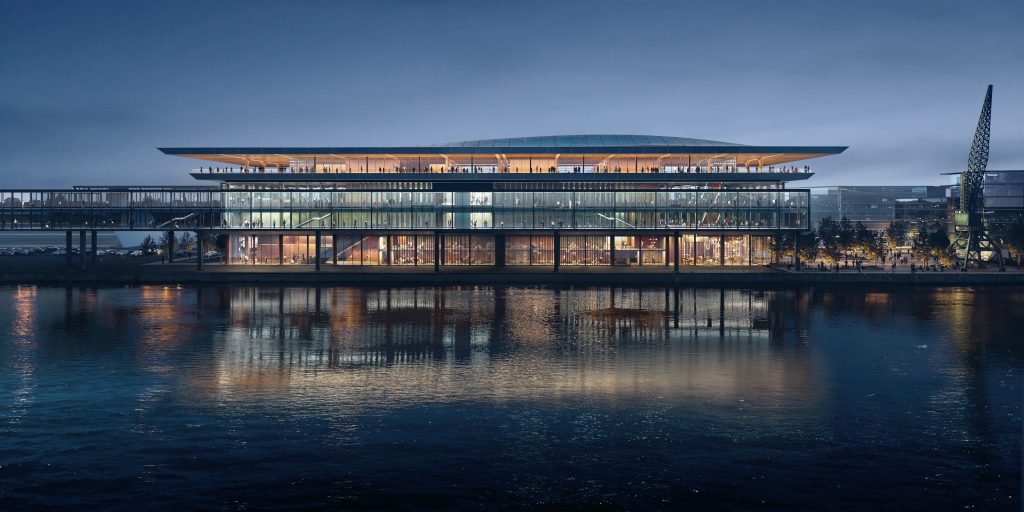
1st Place: Zaha Hadid Architects – night view from river – Render by Negativ
Arriving to board a ferry boat or cruise ship used to be a rather mundane experience. If you had luggage, you might be able to drop it off upon boarding, assuming that the boarding operation was sophisticated enough. In any case, the arrival experience was nothing to look forward to. I recall boarding the SS United States for a trip to Europe in the late 1950s. Arriving at the pier in New York, the only thought any traveler had was to board that ocean liner as soon as possible, find one’s cabin, and start exploring. If you were in New York City and arriving early, a nearby restaurant or cafe would be your best bet while passing time before boarding. Read more… Young Architects in Competitions When Competitions and a New Generation of Ideas Elevate Architectural Quality 
by Jean-Pierre Chupin and G. Stanley Collyer
published by Potential Architecture Books, Montreal, Canada 2020
271 illustrations in color and black & white
Available in PDF and eBook formats
ISBN 9781988962047
Wwhat do the Vietnam Memorial, the St. Louis Arch, and the Sydney Opera House have in common? These world renowned landmarks were all designed by architects under the age of 40, and in each case they were selected through open competitions. At their best, design competitions can provide a singular opportunity for young and unknown architects to make their mark on the built environment and launch productive, fruitful careers. But what happens when design competitions are engineered to favor the established and experienced practitioners from the very outset? This comprehensive new book written by Jean-Pierre Chupin (Canadian Competitions Catalogue) and Stanley Collyer (COMPETITIONS) highlights for the crucial role competitions have played in fostering the careers of young architects, and makes an argument against the trend of invited competitions and RFQs. The authors take an in-depth look at past competitions won by young architects and planners, and survey the state of competitions through the world on a region by region basis. The end result is a compelling argument for an inclusive approach to conducting international design competitions. Download Young Architects in Competitions for free at the following link: https://crc.umontreal.ca/en/publications-libre-acces/ 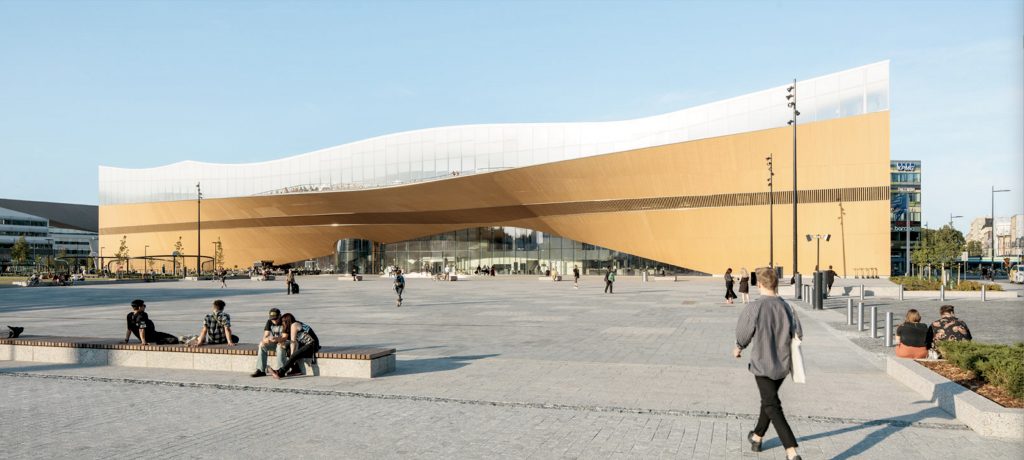
Helsinki Central Library, by ALA Architects (2012-2018)
The world has experienced a limited number of open competitions over the past three decades, but even with diminishing numbers, some stand out among projects in their categories that can’t be ignored for the high quality and degree of creativity they revealed. Included among those are several invited competitions that were extraordinary in their efforts to explore new avenues of institutional and museum design. Some might ask why the Vietnam Memorial is not mentioned here. Only included in our list are competitions that were covered by us, beginning in 1990 with COMPETITIONS magazine to the present day. As for what category a project under construction (Science Island), might belong to or fundraising still in progress (San Jose’s Urban Confluence or the Cold War Memorial competition, Wisconsin), we would classify the former as “built” and wait and see what happens with the latter—keeping our fingers crossed for a positive outcome. Read More… 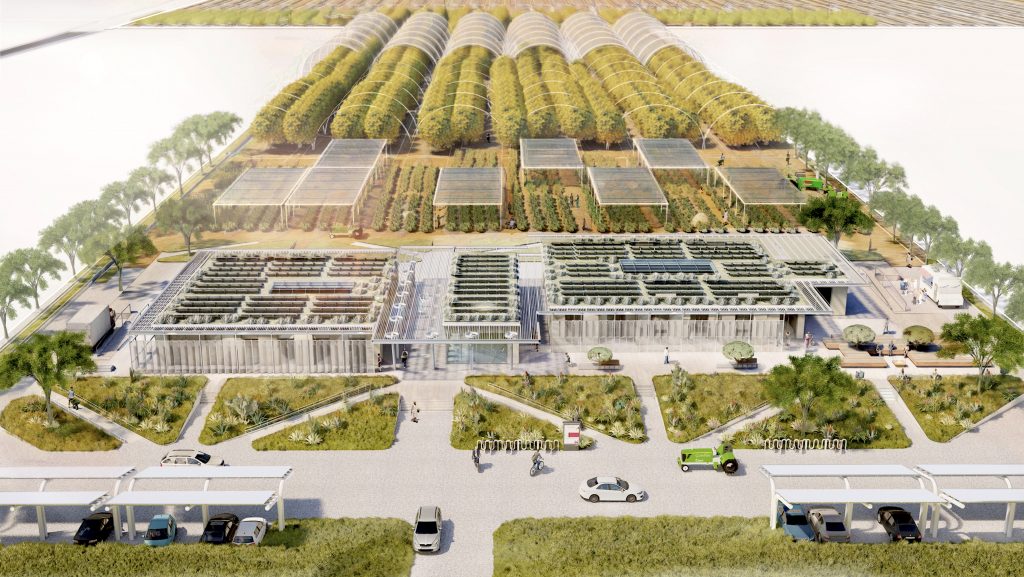
2023 Teaching and Innovation Farm Lab Graduate Student Honor Award by USC (aerial view)
Architecture at Zero competitions, which focus on the theme, Design Competition for Decarbonization, Equity and Resilience in California, have been supported by numerous California utilities such as Southern California Edison, PG&E, SoCAl Gas, etc., who have recognized the need for better climate solutions in that state as well as globally. Until recently, most of these competitions were based on an ideas only format, with few expectations that any of the winning designs would actually be realized. The anticipated realization of the 2022 and 2023 competitions suggests that some clients are taking these ideas seriously enough to go ahead with realization. Read more… 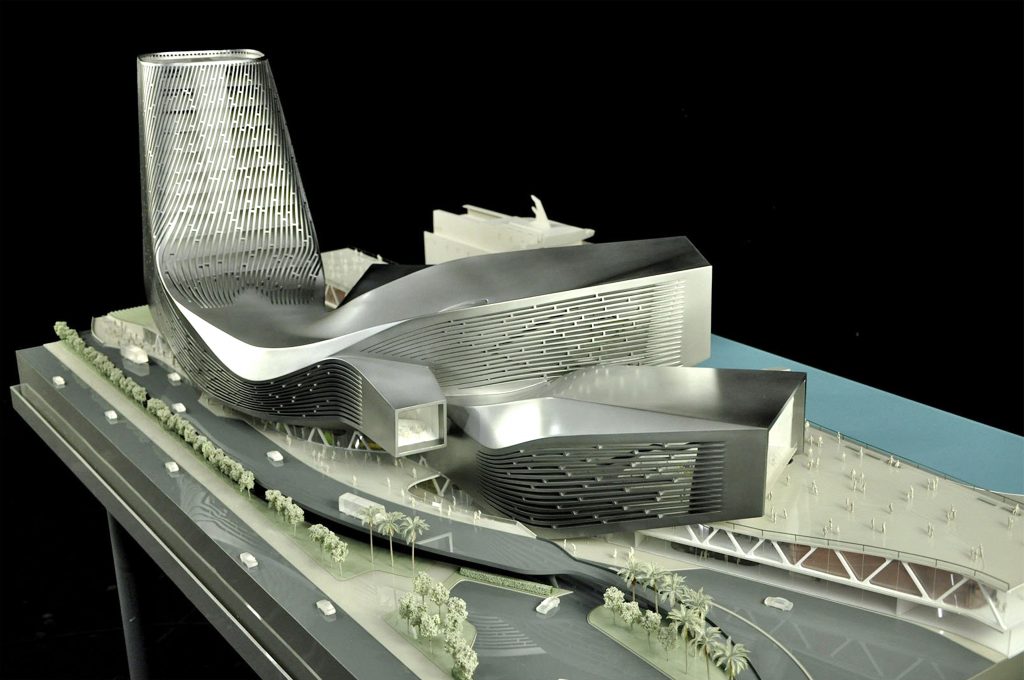
RUR model perspective – ©RUR
New Kaohsiung Port and Cruise Terminal, Taiwan (2011-2020)
Reiser+Umemoto RUR Architecture PC/ Jesse Reiser – U.S.A.
with
Fei & Cheng Associates/Philip T.C. Fei – R.O.C. (Tendener)
This was probably the last international open competition result that was built in Taiwan. A later competition for the Keelung Harbor Service Building Competition, won by Neil Denari of the U.S., the result of a shortlisting procedure, was not built. The fact that the project by RUR was eventually completed—the result of the RUR/Fei & Cheng’s winning entry there—certainly goes back to the collaborative role of those to firms in winning the 2008 Taipei Pop Music Center competition, a collaboration that should not be underestimated in setting the stage for this competition Read more… 
Winning entry ©Herzog de Meuron
In visiting any museum, one might wonder what important works of art are out of view in storage, possibly not considered high profile enough to see the light of day? In Korea, an answer to this question is in the making. It can come as no surprise that museums are running out of storage space. This is not just the case with long established “western” museums, but elsewhere throughout the world as well. In Seoul, South Korea, such an issue has been addressed by planning for a new kind of storage facility, the Seouipul Open Storage Museum. The new institution will house artworks and artifacts of three major museums in Seoul: the Seoul Museum of Modern Art, the Seoul Museum of History, and the Seoul Museum of Craft Art.
Read more… |



























